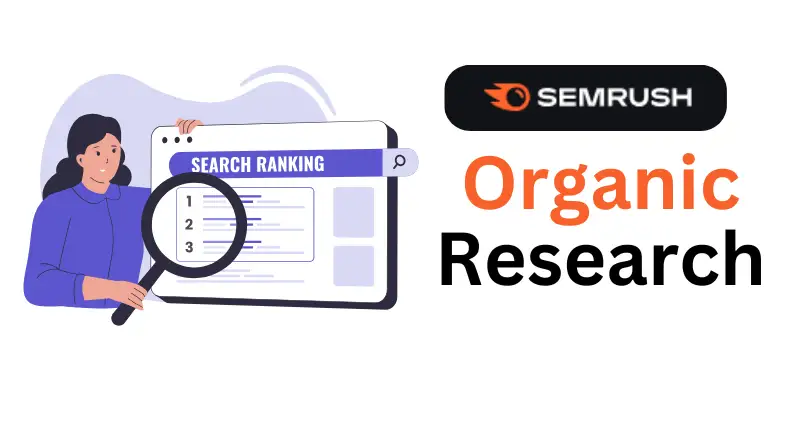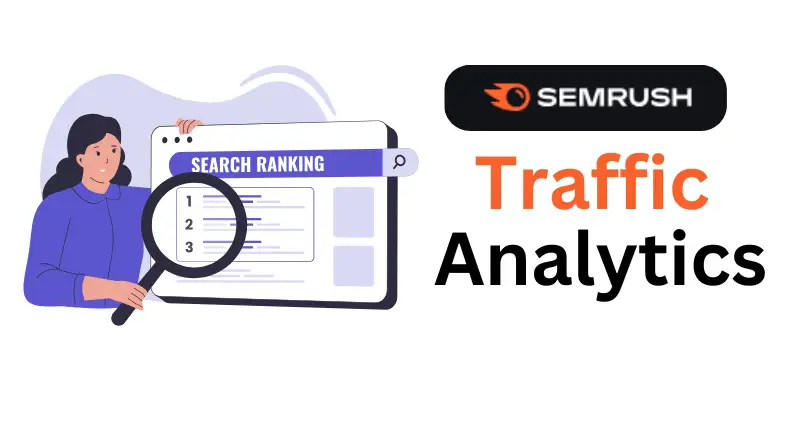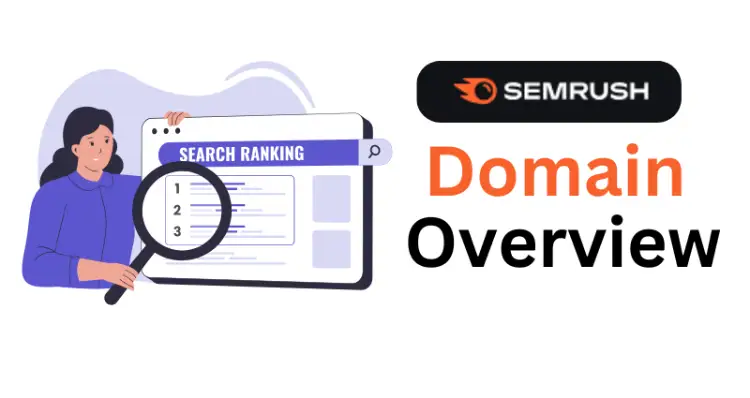This guide on how to approach blogging as a business, designed so beginners can follow it step-by-step.
This roadmap will focus on practical tips you can implement immediately. so bookmark our website

Step 1: Set Clear Business Goals for Your Blog
Your blog is not just a creative outlet; it’s a business. Start with a specific purpose and goals to guide your actions.
Define Your Goals: Think about both short-term and long-term objectives. Examples include:
Short-Term: Build an audience, grow your email list, generate your first $100 in revenue.
Long-Term: Achieve a sustainable income, establish authority in a niche, expand to multiple revenue streams.
Set Measurable Targets: Use numbers to clarify what success means to you. For example:
- Grow to 1,000 email subscribers in the first six months.
- Generate $5,000 in revenue within the first year.
Choose Key Metrics: Decide on a few key performance indicators (KPIs) like traffic, conversions, or revenue. Monitor these as your blog grows.
Step 2: Choose a Profitable Niche and Identify Your Audience
To monetize your blog, you need to solve specific problems for a particular group of people. This is where niche selection and audience identification come in.
Identify Your Interests & Skills: Make a list of topics you’re passionate about and skilled in. This can include:
- Hobbies (e.g., cooking, fitness, or fashion).
- Professional skills (e.g., marketing, finance, or web development).
Research Niche Profitability: Once you have a few ideas, determine if these niches are profitable by:
Using tools like Google Trends to gauge interest levels.
Checking out competitors: Explore successful blogs in your potential niche to see how they monetize.
Define Your Audience: Get specific about who you’re writing for. Create an audience persona with details such as:
- Age, location, and demographics.
- Their biggest problems, goals, and desires.
Pro Tip: Narrow your focus to a micro-niche to start, especially if your niche is highly competitive. For example, rather than “fitness,” you could focus on “fitness for busy moms.”
Step 3: Develop a Business Plan for Your Blog
Approach your blog with the same seriousness as any business venture. A simple business plan will help clarify your objectives, structure, and revenue strategy.
Choose a Business Model: Decide how your blog will make money. Common models include:
Advertising: Display ads via platforms like Google AdSense.
Affiliate Marketing: Promote products from companies like Amazon or other affiliate networks.
Digital Products: Sell eBooks, courses, or printables.
Services: Offer consulting, coaching, or freelancing.
Outline Your Value Proposition: Ask yourself:
- What unique value does my blog offer that others don’t?
- How will I solve my audience’s problems?
Create a Financial Plan: This doesn’t need to be extensive, but plan for:
Initial Costs: Budget for domain registration, hosting, themes, and tools.
Expected Revenue Streams: Estimate how much you can realistically make and from what sources.
Step 4: Build Your Blog’s Foundation with the Right Tools
Now that you’ve laid the groundwork, it’s time to set up your blog. Here are some tools to help you create a professional site that attracts readers.
Get a Domain & Hosting: Your domain is your website address, and your host stores your website files.
Recommended Hosting: Consider providers like Bluehost, SiteGround, or Hostinger for reliable service.
Install WordPress: Use WordPress as your Content Management System (CMS). It’s free and highly customizable.
Choose a Professional Theme: Themes like GeneratePress or Astra offer easy-to-navigate, SEO-friendly designs.
Install Essential Plugins: These plugins will give your blog added functionality. Consider:
Yoast SEO or Rank Math for on-page SEO.
WPForms to collect emails via contact forms.
UpdraftPlus to back up your site regularly.
Step 5: Develop a Content Strategy
Your content is what will attract visitors, keep them engaged, and convert them into loyal followers and customers. Create a solid content strategy from the start.
Plan Content for Each Stage of the Funnel:
Awareness Stage: Broad topics that address general questions (e.g., “How to Start a Blog”).
Consideration Stage: In-depth guides that provide specific solutions (e.g., “10 Ways to Monetize Your Blog”).
Decision Stage: Product reviews, case studies, or comparisons to help readers make purchasing decisions.
Create a Content Calendar: Consistency is key in blogging. Plan your content schedule for the next 3–6 months to stay organized.
Leverage AI for Content Creation: Use tools like ChatGPT to brainstorm ideas, generate outlines, or even create initial drafts. This can save time and keep your content flow consistent.
Step 6: Optimize for SEO from Day One
SEO (Search Engine Optimization) is critical for attracting organic traffic. Start with foundational SEO practices and improve as your blog grows.
Conduct Keyword Research: Use tools like Ahrefs, Ubersuggest, or Google Keyword Planner to find keywords with high search volume and low competition.
Optimize On-Page Elements: Include your primary keyword in:
Title Tag: The main headline that appears in search results.
Meta Description: A brief summary of your post for search engines.
Headers (H1, H2, H3): Break up your content for easy reading and SEO benefits.
Write for Humans First, Search Engines Second: Ensure your content is useful and engaging. If your readers stay longer, search engines take notice.
Optimize Images: Use descriptive file names, add alt text, and compress images to improve loading speed.
Step 7: Grow Your Audience and Build a Community
To build a sustainable blogging business, you need a loyal audience. Work on growing and nurturing your audience over time.
Promote Content on Social Media: Share your content on platforms like Facebook, Instagram, and Twitter to attract readers.
Use engaging visuals and captions that prompt readers to click through to your blog.
Build an Email List Early: Use email marketing tools like Mailchimp or ConvertKit to capture emails. Offer a valuable lead magnet, such as a free eBook or checklist, to encourage sign-ups.
Engage with Your Readers: Respond to comments, join relevant online communities, and participate in discussions on forums like Reddit or Quora. Your engagement builds trust and attracts more readers.
Step 8: Monetize Your Blog with Multiple Revenue Streams
Your blog should have a few revenue streams to increase income stability. Here’s how to monetize effectively.
Affiliate Marketing: Choose relevant affiliate programs that align with your niche. Promote these products in your blog posts with an honest, value-driven approach.
Use tools like ShareASale or Amazon Associates to find products to promote.
Digital Products and Courses: Turn your expertise into a digital product. Platforms like Teachable or Gumroad make it easy to sell courses or eBooks.
Sponsored Content: Once you have a following, brands may pay you to promote their products. Approach brands that align with your blog’s message.
Offer Services: Based on your expertise, offer consulting or coaching services. For example, if you blog about digital marketing, offer one-on-one coaching or workshops.
Step 9: Track, Analyze, and Improve
To grow your blogging business, track its performance. Use data to understand what’s working and refine your strategy over time.
Set Up Google Analytics: This free tool lets you see who’s visiting your site, how long they stay, and which pages they view.
Analyze Key Metrics:
Traffic: Track how much traffic each post gets and where it’s coming from.
Conversion Rates: Measure email sign-ups, product purchases, or any other conversion goals.
Bounce Rate & Dwell Time: Understand whether people find your content engaging.
A/B Test to Optimize: Experiment with headlines, calls to action, and content structure. Continuous testing helps you improve based on real data.
By following this roadmap, you’ll establish a strong foundation for your blogging business, attract a loyal audience, and create multiple revenue streams.
Step 10: Scale and Automate Your Blogging Business
Once you’ve established a blog that generates consistent traffic and revenue, it’s time to move from a single-person operation to a more scalable and automated model.
This step is crucial for turning your blog into a full-fledged business that works for you, allowing you to focus on strategy, growth, and innovation.
10.1: Build a Team and Outsource Tasks
As your blog grows, handling every task yourself can become overwhelming. Building a small team or outsourcing certain tasks can help maintain a high standard of content and free up your time.
Identify Areas to Outsource: Common tasks to outsource include:
Content Creation: Hire freelance writers or editors to help with research, writing, and editing.
Graphic Design: Use platforms like Canva or hire a designer for custom graphics, infographics, and social media visuals.
Social Media Management: Hire a social media manager to schedule posts, engage with followers, and grow your online presence.
Technical Maintenance: If you’re not tech-savvy, consider hiring someone to manage site speed, security, and regular updates.
Find Reliable Freelancers or Agencies: Use platforms like Upwork, Fiverr, or Toptal to find skilled freelancers. For long-term relationships, consider hiring virtual assistants or part-time employees who can grow with your business.
Document Your Processes: Create standard operating procedures (SOPs) for common tasks. SOPs allow you to onboard new team members quickly and ensure consistency in the quality of work.
Pro Tip: Start with a small team and expand gradually. For instance, hire a writer to produce extra content each week, then bring on a social media manager when you’re ready to expand your social media presence.
10.2: Invest in Paid Advertising and Marketing
Once your blog generates revenue, reinvest a portion into paid marketing to scale your reach and drive targeted traffic.
Leverage Pay-Per-Click (PPC) Advertising: Google Ads and Facebook Ads can help you reach a broader audience. Use these for:
Content Promotion: Boost your top-performing content to attract new readers.
Lead Generation: Run ads for lead magnets (like eBooks or webinars) to grow your email list.
Product Promotion: Directly promote digital products or services to drive sales.
Use Retargeting Ads: Set up retargeting campaigns on Google, Facebook, or Instagram to reach people who have visited your site but didn’t convert. This strategy can increase conversions and build brand familiarity.
Influencer Partnerships: Collaborate with influencers in your niche to reach their audience. Influencers can promote your blog, products, or services, boosting brand awareness and credibility.
10.3: Automate Routine Tasks
Automating repetitive tasks allows you to focus on strategic activities that grow your business. Here are some key areas where automation can streamline your blog operations:
Social Media Automation: Schedule posts in advance using tools like Hootsuite, Buffer, or Sprout Social. You can create a week’s worth of content in one sitting, freeing up time for other tasks.
Email Marketing Automation: Use tools like Mailchimp, ConvertKit, or ActiveCampaign to automate your email marketing campaigns.
Set up welcome sequences for new subscribers to introduce them to your brand.
Create automated funnels that nurture leads and convert them into customers.
Segment your email list based on behavior to deliver personalized content that resonates with different audience segments.
Content Workflow Automation: Use project management tools like Trello, Asana, or Monday.com to create workflows for content production. Assign tasks to team members, set deadlines, and track progress in one place.
Customer Relationship Management (CRM): If you offer services or products, a CRM tool like HubSpot or Zoho can help manage leads, automate follow-ups, and track sales progress.
10.4: Expand Your Revenue Streams
Diversifying your income sources is essential for building a stable, resilient business. Here are some strategies to expand your revenue streams effectively:
Create and Sell Online Courses: Courses are a high-ticket item with the potential for substantial profit. Use platforms like Teachable or Thinkific to host your courses, covering topics your audience is eager to learn.
Develop a Membership Site: If you produce premium content, consider creating a members-only area with access to exclusive resources, community forums, or monthly Q&A sessions.
Platforms like MemberPress and Patreon make it easy to build a paid community.
Explore Physical Product Sales: Print-on-demand products, such as branded merchandise, can help you establish your blog as a lifestyle brand. Consider using platforms like Printful or Shopify to manage your online store.
Host Webinars or Workshops: Charge for access to live webinars or in-depth workshops. These events can serve as both a revenue stream and a powerful lead-generation tool.
Affiliate Marketing Partnerships: Beyond blog posts, explore other ways to integrate affiliate marketing, such as exclusive email promotions, dedicated landing pages, or bonus offers for those who purchase through your affiliate links.
10.5: Repurpose Content to Reach New Audiences
Repurposing content allows you to maximize the reach of every piece you create, saving you time while extending your audience.
Turn Blog Posts into Videos: Use platforms like YouTube, TikTok, or Instagram Reels to repurpose blog content into short-form video content, appealing to visual learners.
Create a Podcast Series: If you have a library of informative blog posts, convert them into podcast episodes to reach audio-focused audiences. You can use tools like Anchor to distribute podcasts across major platforms.
Repurpose for Social Media: Break down long-form blog posts into bite-sized content for Instagram carousels, Twitter threads, or LinkedIn posts. This approach gives your content a second life while driving traffic back to your site.
Compile eBooks or Guides: Collect related blog posts, update them, and compile them into an eBook or downloadable guide. This is a great way to generate leads or offer a valuable paid product.
10.6: Use Data to Drive Continuous Improvement
Scaling your blog as a business means constantly improving your approach. Rely on data to understand what’s working, what’s not, and where to focus your efforts.
Analyze Key Performance Indicators (KPIs): Regularly review metrics like:
Traffic and Source Analysis: Understand which channels bring the most visitors.
Conversion Rates: Measure the percentage of visitors who take specific actions, such as signing up for your email list or purchasing a product.
Engagement Metrics: Track bounce rate, time on page, and social shares to gauge how well your content resonates with readers.
A/B Test Marketing Strategies: Use A/B testing to optimize headlines, CTAs, and other elements on your blog. Small tweaks based on test results can lead to significant improvements in conversion rates.
Survey Your Audience: Periodically ask your audience for feedback through surveys or polls. Their insights can guide future content topics, product ideas, and improvements to your blog experience.
10.7: Expand into New Markets and Niches
As your blog continues to grow, consider ways to expand into adjacent niches or international markets. This can help you capture new audiences and explore additional revenue opportunities.
- Target New Audience Segments: If you blog about personal finance, consider expanding into related areas like investing or entrepreneurship. Explore topics that appeal to a broader audience, while still aligning with your brand.
- Translate Your Content: Translating your blog into other languages allows you to reach new markets. Start by identifying countries where your niche has high demand and use translation services to localize your content.
- Build Partnerships with Other Brands: Collaborate with other businesses or influencers in your niche. These partnerships can include co-hosted webinars, joint content creation, or affiliate partnerships that help both parties expand their reach.
FAQs: Approaching Blogging as a Business
1. What are the first steps to starting a blog as a business?
Start by defining your goals, choosing a profitable niche, and identifying your target audience. Then, set up your blog with a domain, hosting, and a content management system like WordPress.
2. How do I choose a profitable niche for my blog?
Identify your interests and skills, research market demand using tools like Google Trends, and analyze competitors. Choose a niche that combines your passion with audience demand and monetization potential.
3. Can I make money blogging?
Yes, many bloggers earn substantial incomes through various revenue streams such as affiliate marketing, sponsored content, selling digital products, and offering services. However, it takes time and effort to build a profitable blog.






